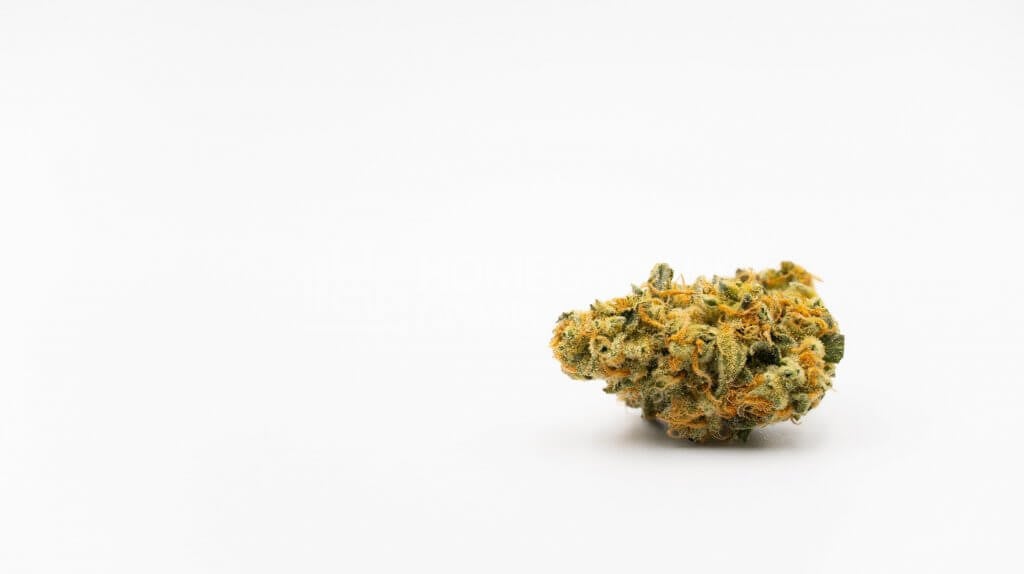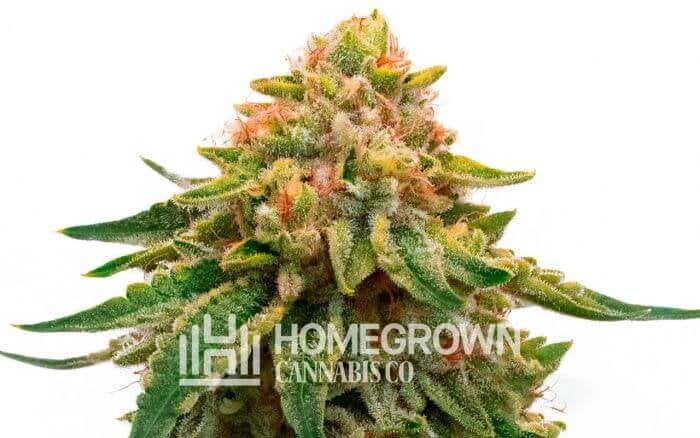What Are the Orange Hairs on Weed?
One of the most intriguing aspects of weed plants is the presence of orange hairs on weed. What exactly are these tiny structures, and what do they mean for 420 enthusiasts?
We explore everything you need to know about orange hairs on marijuana. Discover their purpose, potential potency, and the most popular marijuana strains that feature them.
Let’s get started.
What are the orange hairs called?
If you’re unfamiliar with weed plants, it may be a surprise to see that they produce such vividly colored appendages. These orange hairs on weed are known as pistils.
Pistils are an essential part of the cannabis plant’s reproductive cycle. These small, hair-like structures protrude from the calyx and play a significant role in catching pollen.
Their color varies throughout the growing process, beginning with white and progressing to orange, red, and eventually brown. Bright amber pistils are often a sign of high-quality cannabis buds.
The stigma is responsible for capturing pollen from male plants and is found in the upper part of the pistil. It creates the distinctive look of cannabis plants with their long, delicate hairs.

What causes orange hairs on weed?
The presence of orange hairs on weed is one of the most defining characteristics of mature buds.
The color of these hairs can change based on the marijuana strain, the growing conditions, and the area of the plant they appear on.
The presence of pigments called anthocyanins impacts the hue of the pistils. They form in reaction to certain environmental variables, like temperature, humidity, and light exposure. These factors also affect the hue of other parts of the cannabis plant, like the leaves and stem.
The role of pistils for cannabis growers
If you’re a grower, you know how vital it is to understand the anatomy of cannabis to produce high-quality buds.
Pistils are vital to the female plant’s reproductive system because they function as pollen receptors. Orange hairs on weed capture pollen from male plants and cause female plants to create seeds.
The pistils don’t produce cannabinoids, but are a key sign of how healthy and active a cannabis plant is. Well-cared-for crops usually have big, healthy pistils, while stressed or sick plants may have smaller ones.
You can also determine your plant’s gender by paying attention to the pistols. One of the main differences between male and female cannabis pistils is their shape.
Female pistils are long and slender, resembling hairs. They extend outwards from the calyx, giving the buds a fuzzy look. Male plants, on the other hand, produce small, round pollen sacs that hang from the stem or branch.
By paying attention to the pistils, growers can find problems early on and fix them before they hurt the quality of the final crop. When growing regular seeds, remember to separate male plants if you don’t want seeded buds. Alternatively, opt for feminized seeds.

Are orange hairs good or bad?
You’re probably wondering if orange hairs are good or bad. They’re neither, but they help determine the quality of the cannabis nugs you’re about to consume.
When you see lots of orange hairs on weed, it generally means that the plant hasn’t been pollinated and is of high quality.
The presence of orange hairs also signifies that the plant is mature and has reached its peak potency. When the crop is ready, the pistils change from white to orange.

The pistils’ color alone can’t ascertain the quality of cannabis buds. Other factors, like the aroma, taste, and effects, should also be considered.
Can orange hairs on weed be an indication of its potency?
The color of the weed isn’t the most reliable indicator of potency. While many believe that vibrant-colored pistils indicate strong weed, no scientific evidence supports this claim. Orange hairs on weed contain THC, but in much smaller amounts than trichomes.
Marijuana’s hue is determined by the presence of pigments known as anthocyanins. They don’t contribute to the potency, but they contain antioxidants with various potential health benefits.
These antioxidants are thought to possess analgesic, anti-inflammatory, and neuroprotective properties. Further research is needed to understand these compounds’ potential benefits fully.
While the vibrant color of pistils may add to the aesthetic appeal of the flowers, it isn’t the best indicator of potency. When selecting a strain, it’s essential to consider factors beyond just the color of the buds to ensure you get the desired effects.
The most popular strains with orange hairs
Cannabis has been used for thousands of years for medicinal and recreational purposes. It’s now more popular than ever, with legalization becoming the norm across many regions.
Among the different cannabis cultivars available, orange strains have increased in popularity in recent years among both seasoned and rookie growers.
Here are the top five cultivars with orange hairs on their weed buds:
- Orange Skunk feminized combines two legendary strains: Skunk #1 and California Orange. It’s famous for its energizing and uplifting qualities. It has a lemony scent and flavor with a spunkiness that distinguishes it from other cultivars.

- Chocolate Orange feminized is a hybrid created by crossing Chocolate Thai and Orange Skunk. This strain is well-known for its specific flavor and scent, a blend between chocolate and orange notes.
- Agent Orange regular has a pleasant lemony taste and flavor. This mostly sativa strain is recognized for its uplifting and cerebral effects. It’s a product of Jack The Ripper x Orange Velvet.
- Orange Bud feminized is known for its sweet citrusy flavor. Its uplifting effects can boost creativity and focus, making it an excellent choice for tackling artistic endeavors or socializing with friends. It’s a cross between Hindu Kush and Purple Afghani.
- Tangie feminized is another citrusy sativa-dominant strain. It’s known for its cerebral effects, making it a suitable choice for daytime use or when you need extra focus. It blends the genetics of Skunk #1 and California Orange.
Beyond the color
Contrary to popular belief, the orange hairs on weed don't reveal the plant’s potency. Instead, it results from the presence of anthocyanins, compounds produced in response to environmental factors like temperature, light, and humidity.
Two plants from the same strain can have different colored pistils, but their potency could still be the same.
How do you determine the quality of marijuana buds? The answer lies in your senses. When assessing a strain, focus on its smell, taste, and how it makes you feel. These are much better indicators of potency and quality.
Smelling the buds gives you an idea of the flavor profile. Tasting the weed gives you an even better understanding of its flavor, which can be complex and nuanced. The mind and body effects can also tell you a lot about its potency and quality. Don’t overlook the THC levels, either.
While brightly colored pistils may make your buds look pretty, don’t rely solely on them when determining the quality of your weed. Use your senses, consider the strain’s characteristics, and let your body be the judge.

FAQs
Whether you’re a regular grower or a curious consumer, we’ll dive into some of the most commonly asked questions about orange-colored weed hairs.
Do orange hairs on weed get you high?
The orange hairs on weed don’t contribute to the plant’s potency. The neighboring trichomes produce the coveted effects. These microscopic structures coat the buds and sugar leaves. They contain the THC and CBD compounds that deliver euphoric and medicinal effects.
Are too many orange hairs ok?
Some growers may be concerned when they see too many orange hairs. The good news is that an abundance of these appendages indicates high-quality weed.
Large amounts of pistils show that the cannabis plant was grown under ideal conditions, allowing it to reach maximum potency and flavor. These hairs also help protect the buds from pests and diseases, so your crops will likely be healthier and more robust overall.
Do pistils turn orange when drying?
When the pistils are 70–80% orange and curl inwards, it’s the perfect time to harvest the buds for maximum potency and flavor. You may notice that more of the pistils start turning orange during drying. This is an entirely normal phenomenon and nothing to worry about.
As the moisture evaporates from the buds, the pistils continue to oxidize, and their color changes from white to orange. The orange hairs on weed indicate that the buds are drying correctly and are ready for curing.
Why do pistils turn brown early?
As a cannabis plant matures, its pistils naturally turn brown and dry out, signaling that it’s past its peak. If the hairs turn red too early, or brown, it may point towards deficiencies. The top of the pistils turning brown could also signify pollination. The stigmas have fulfilled their purpose and are no longer needed.
Should all hairs be orange before harvest?
When your plants approach maturity, the white hairs on weed gradually turn orange or brown. If you wait for all the hairs to turn orange before harvesting, it may be too late. Look for other signs of maturity, such as the size and shape of the buds and the plant’s overall health.
While some hairs may turn orange or red, not all of them will. Some cannabis strains have hairs that remain white throughout the entire flowering period.
